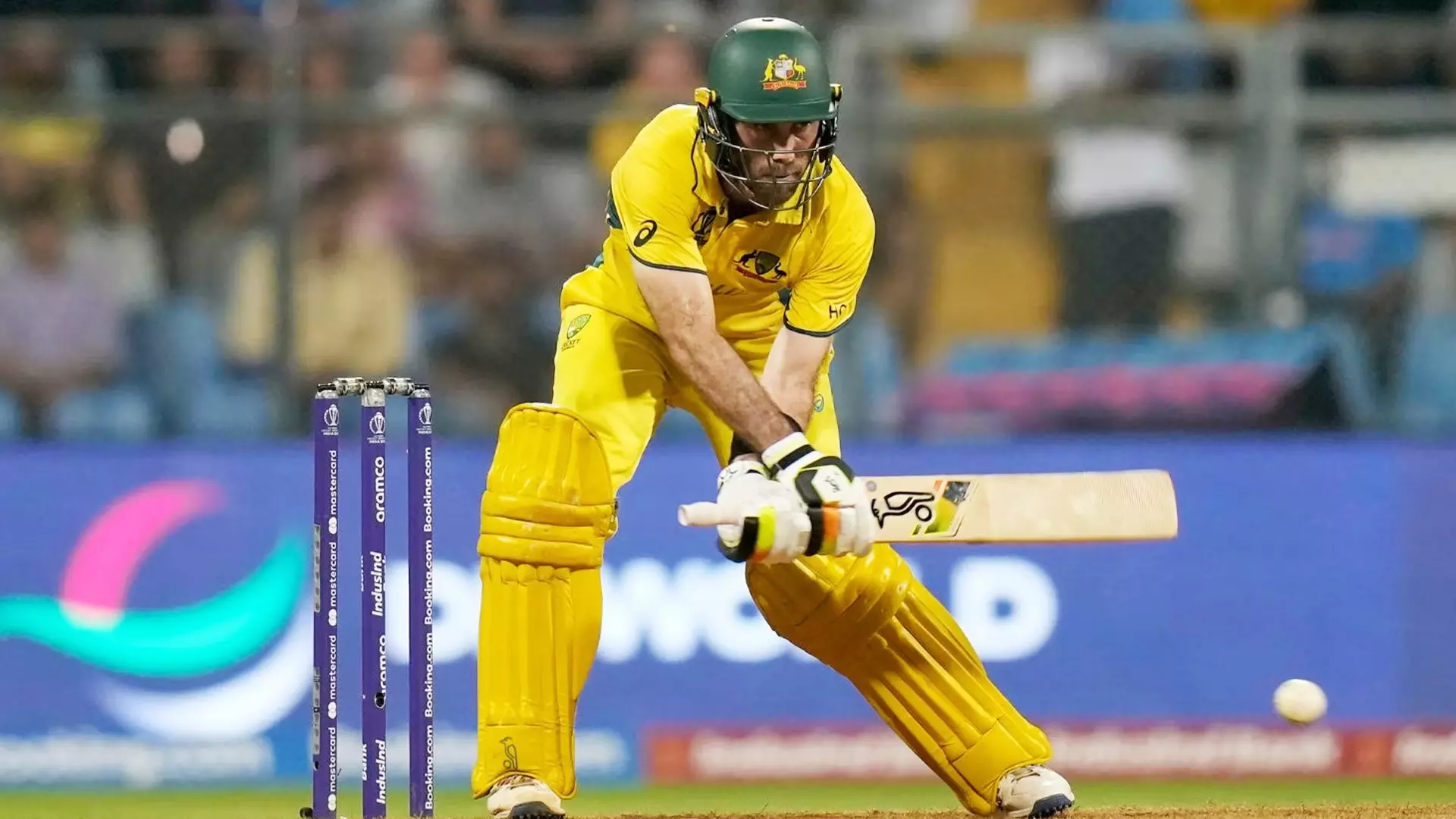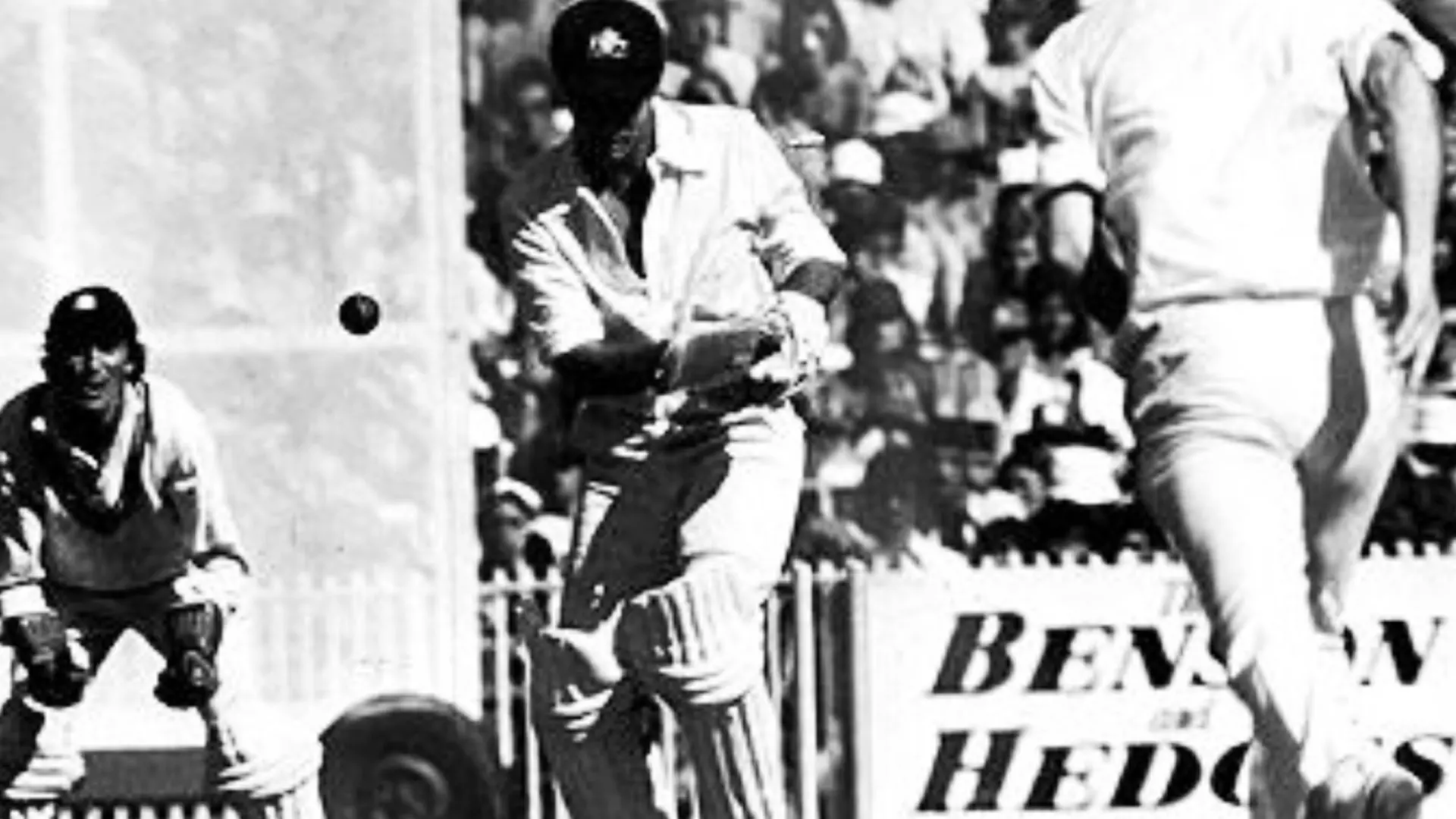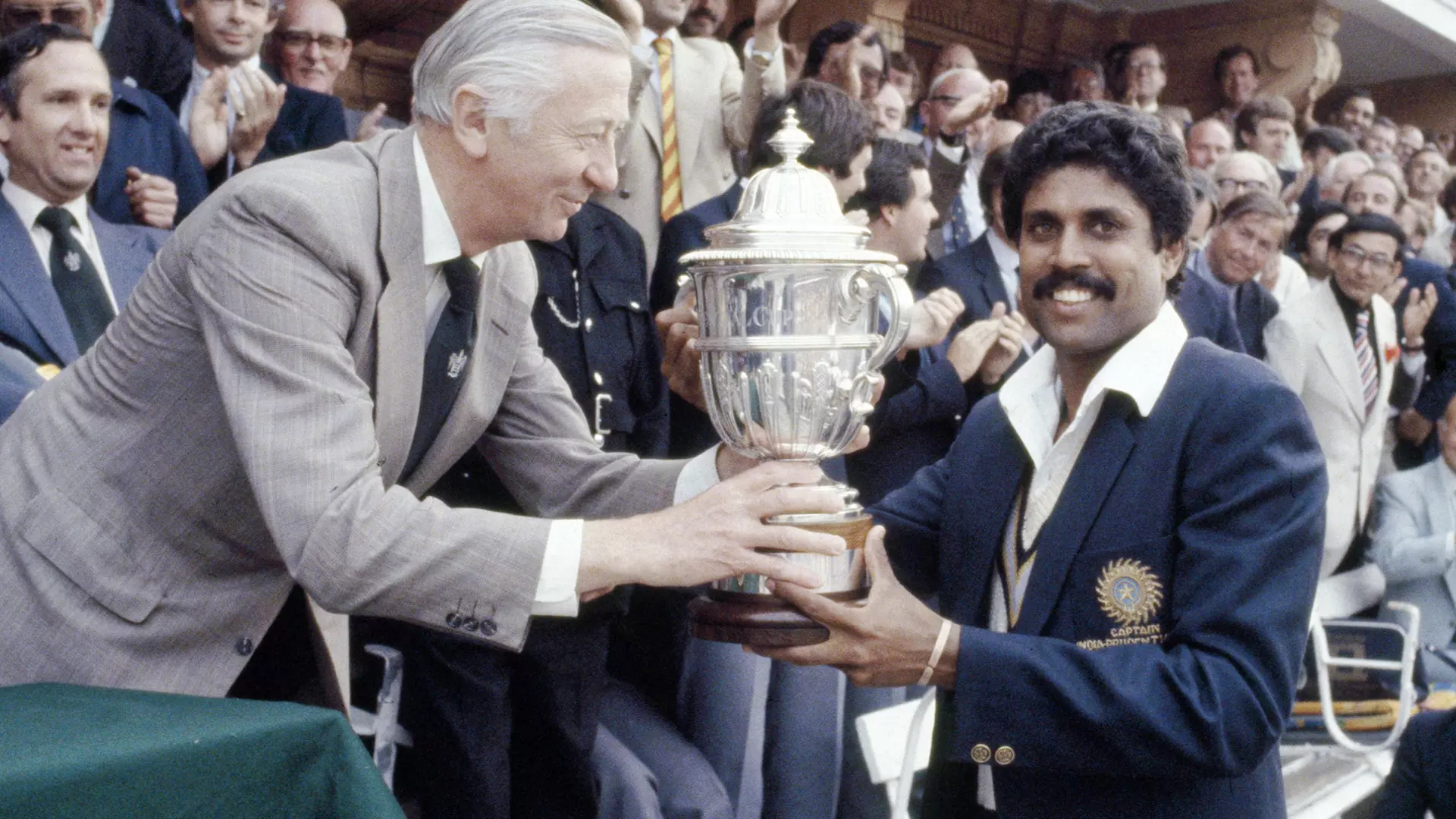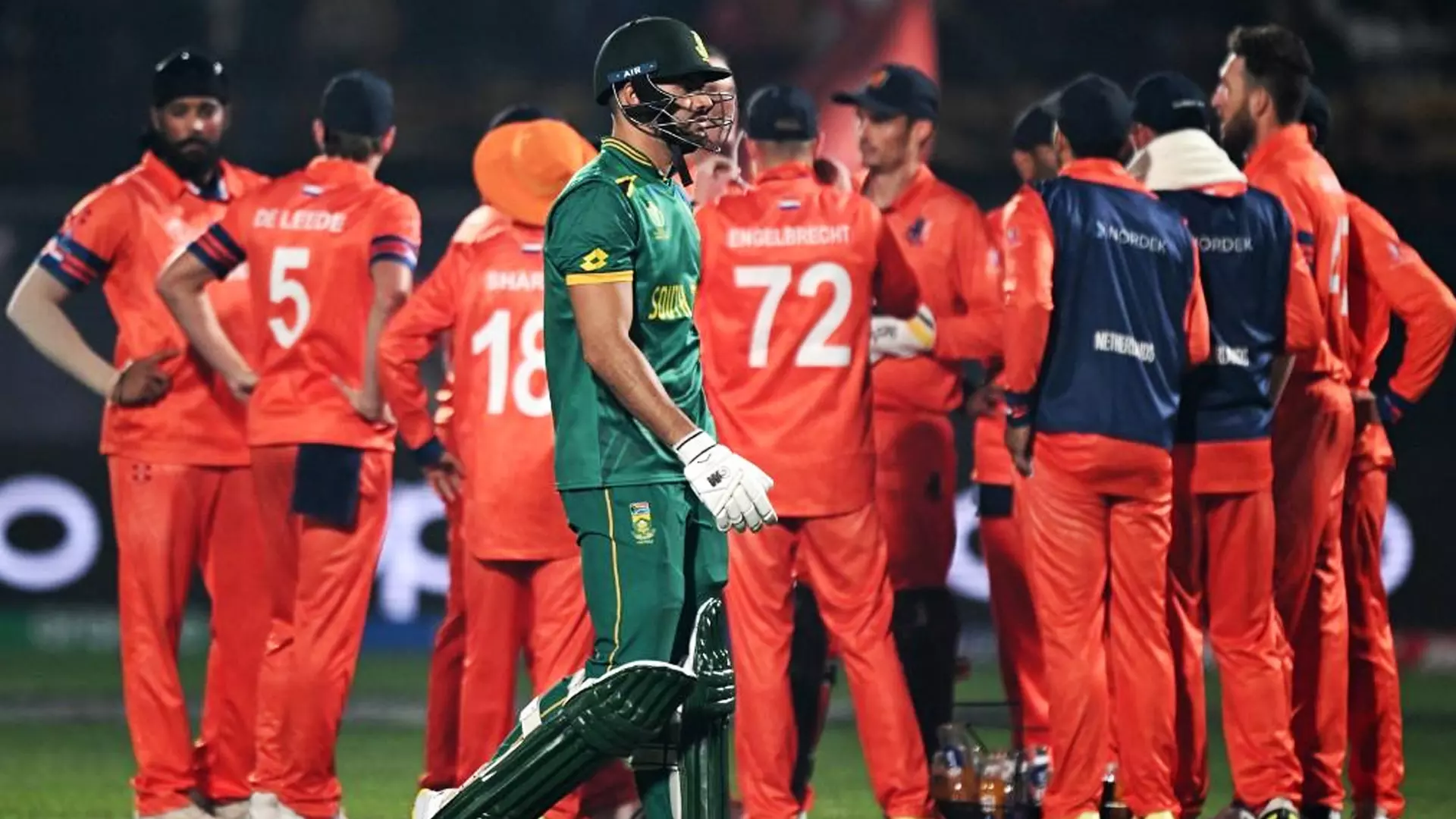
- Home
- India
- World
- Premium
- THE FEDERAL SPECIAL
- Analysis
- States
- Perspective
- Videos
- Sports
- Education
- Entertainment
- Elections
- Features
- Health
- Business
- Series
- In memoriam: Sheikh Mujibur Rahman
- Bishnoi's Men
- NEET TANGLE
- Economy Series
- Earth Day
- Kashmir’s Frozen Turbulence
- India@75
- The legend of Ramjanmabhoomi
- Liberalisation@30
- How to tame a dragon
- Celebrating biodiversity
- Farm Matters
- 50 days of solitude
- Bringing Migrants Home
- Budget 2020
- Jharkhand Votes
- The Federal Investigates
- The Federal Impact
- Vanishing Sand
- Gandhi @ 150
- Andhra Today
- Field report
- Operation Gulmarg
- Pandemic @1 Mn in India
- The Federal Year-End
- The Zero Year
- Science
- Brand studio
- Newsletter
- Elections 2024
- Events
ICC World Cup 2023: Is it time to bowl out ODI cricket?
To be both the flagship event and the competition to prop up the 50-over format is a daunting, onerous responsibility, but the World Cup has walked the delicate tightrope with tremendous dexterity.After a tepid beginning, the tournament has sprung to life, spurred mainly by hosts India’s extraordinary run and a slew of other dominant performances, not least Glenn Maxwell’s...
To be both the flagship event and the competition to prop up the 50-over format is a daunting, onerous responsibility, but the World Cup has walked the delicate tightrope with tremendous dexterity.
After a tepid beginning, the tournament has sprung to life, spurred mainly by hosts India’s extraordinary run and a slew of other dominant performances, not least Glenn Maxwell’s on-one-leg, other-worldly unbeaten 201 against Afghanistan when all seemed lost.
At a time when One-Day International cricket is in a desperate battle for survival, the World Cup has come as the best advertisement for the format, though whether this tournament alone can sustain the 50-over game is questionable.

On November 7, Glen Maxwell stood between Afghanistan and victory, literally on one leg. Photo: PTI
When limited-overs cricket made its first appearance at the international level, it was entirely accidental. With three days of the Ashes Test in Melbourne washed out, in a rare show of enterprise, the Australian and England boards agreed to a 40-overs-a-side, eight-balls-an-over contest on 5 January 1971. The exploratory exercise was received favourably, though it took more than four and a half years for the first men’s limited-overs World Cup, across 60 overs, to be played in England in 1975.
It took the players, and the audience, time to warm to the new variant. The advent of Kerry Packer’s World Series Cricket in Australia in 1977 was to prove to be a seminal moment; initially ridiculed as pyjama cricket, coloured clothing, black sightscreens and white cricket balls became the norm and the limited-overs game came to occupy a pre-eminent place in the cricketing landscape.
India’s epochal victory in the 1983 World Cup and the subsequent mushrooming of interest in one-day cricket in the country led to the World Cup moving out of England for the first time, in 1987. Gradually, as the tournament travelled to different parts of the globe, 50-over cricket became the sport’s cash cow, seriously endangering the future of Test cricket. It didn’t help that the men who ran the sport in different parts of the world treated the five-day game in cavalier fashion. Flat tracks and no assistance for bowlers sparked batathons and several draws, further contributing to the weaning away of the fans from the traditional format that has produced numerous classics, including tied Tests in Brisbane (1961) and Chennai (1986), both featuring Australia.

Australia's Greg Chappell is bowled at the MCG. The advent of Kerry Packer’s World Series Cricket in Australia in 1977 was to prove to be a seminal moment.
Alive to the dangers of treating Test cricket as an unwanted child, the administrators woke up belatedly, offering greater balance between bat and ball. Conversely, while the popularity of Test cricket began to rise through the second half of the 1990s, one-day cricket lapsed into tedium, the touch of predictability no longer finding resonance with the sport’s biggest stakeholders.
Something had to give, and that something came in the form of 20-over cricket. A result was guar-anteed in a little over three hours — just a little longer than the average Bollywood movie — and the atmosphere T20 cricket provided, with its mixture of cricket and entertainment, drew newer fans to the game. These included families — women and young children came out in large numbers, populating the grass banks that abound outside the subcontinent, and 50-over cricket was pushed to the brink, its relevance increasingly being questioned with bilateral contests hardly generating interest.
When it was World Cup time, though, things changed dramatically. Every four years, as the tournament moved from one continent to another, the show developed a life of its own. Formats were changed, more teams were assured participation in the tournament and while other 50-over internationals continued to languish, the quadrennial extravaganza continued to attract eyeballs by the millions. It was a strange, almost inexplicable phenomenon; generally, country versus country contests lead to the World Cup, in any sport, with the big bash the pinnacle. In this instance, the pinnacle had to rescue the format from plateauing, from dying a natural, organic death. How the World Cup has managed to do so is little short of miraculous.

India’s epochal victory in the 1983 World Cup and the subsequent mushrooming of interest in one-day cricket in the country led to the World Cup moving out of England for the first time, in 1987.
What this goes to show is that in this world of instant gratification, nothing is more significant than context. True, bilateral showdowns are often the pathway to securing qualification to the World Cup, but beyond games involving India (anywhere in the world) and maybe England and Australia and South Africa, matches have been poorly patronaged by the fans. While they are willing to sit five days (or mainly four, given that very few Tests now spill over to the final day) and watch the fascinating ebbs and flows of Test cricket, seven hours of a 100-over game have proved too much of an ask.
Much of it has to do with the standardisation of pitches across the world, which has made the one-day game an extension of the slam-bang 20-over version. The fans’ argument is that if fours and sixes is all that is on offer, they’d rather partake of the entertainment a 40-over encounter throws up and go about their lives instead of investing more than twice their time towards the same end. The constant rule changes that have reduced bowlers to serfs and encouraged batsmen of even mediocre skills to showcase their power hasn’t helped either.
The authorities concerned, while continuing to harp on the importance of ensuring the primacy of each of the three international formats, have done little to spice up the 50-over game, which again reiterates the pull and charm of the World Cup. The 13th edition might have taken a little bit of time to spring to life, but with the tournament heading towards its climactic phase, it can be safely said that this tournament has been a grand success.
India’s overwhelming success to date has, needless to say, played a massive role in drawing crowds by the thousands to the venues. It was always a given that matches involving India would be massive populated, and in the early days, it appeared as if Indian crowds were fans of the Indian cricket team than the sport itself, but as Afghanistan started to stack up the upsets, as Netherlands defeated South Africa and as defending champions England imploded sensationally, fans packed the grounds for neutral, non-India games, much to the delight of the International Cricket Council and the Board of Control for Cricket in India, as well as the host broadcasters who hate nothing more than telecasting matches played in front of empty stadiums.
It hasn’t hurt that the ten venues that have staged these games have all thrown up different surfaces and therefore different challenges. Some have been decidedly batsman-friendly, others have assist-ed bowlers. India’s unchallenged march, however, has worked like a charm, their jaw-dropping bowling the talk of the cricket world which hasn’t just attracted billions to television screens but also raised the profile of the one-day format.

Netherlands defeated South Africa. Photo: PTI
There are plentiful lessons from the success of the World Cup for the officialdom to glean if 50-over cricket is to retain its contextual relevance. Paying mere lip service won’t suffice anymore. Already, new additions like T10 and The Hundred have come to stay, further imperiling the sustainability of one-day cricket. To expect, therefore, the World Cup alone to maintain the interest is both naïve and foolhardy. After all, a Maxwell won’t happen every night, nor will the ‘timed out’ incident involving Shakib Al Hasan and Angelo Mathews (to be honest, once was one time too many). ODI cricket needs careful nurturing. Immediately.

